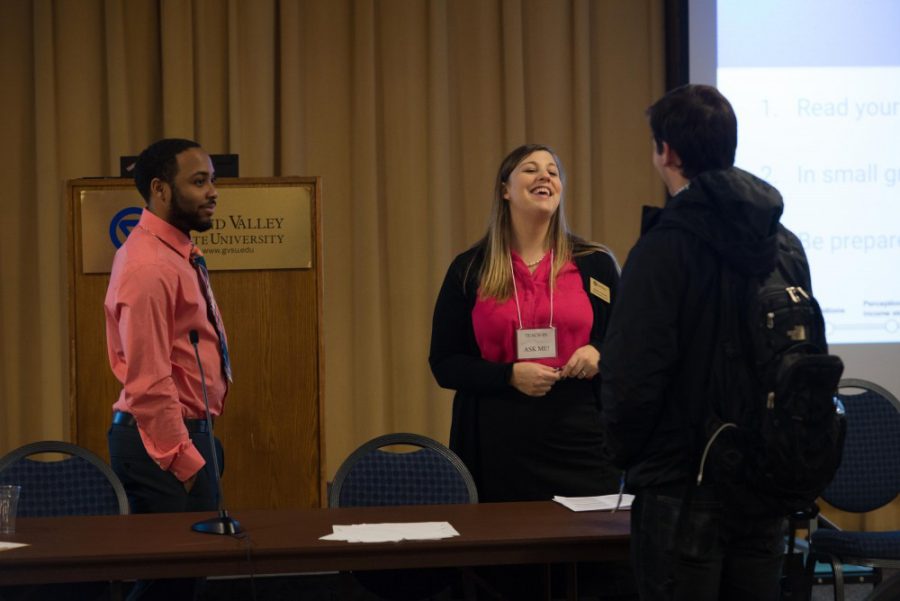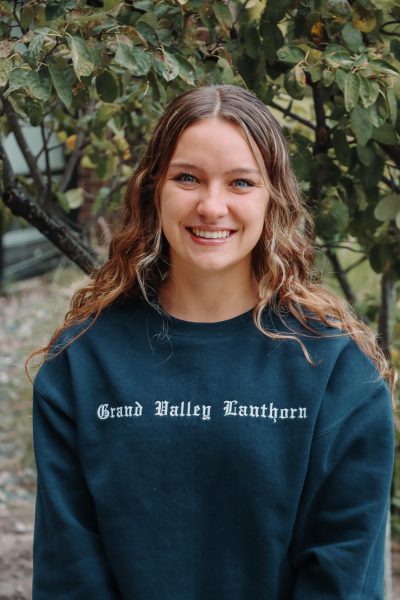GV students are given a voice at annual Teach-In
Oct 11, 2021
Grand Valley State University has opened applications for the annual Teach-In that will take place from Nov. 10 and 11. The Teach-In gives students and faculty the opportunity to collaborate with one another to present a variety of topics that center around the ideas of “Power, Privilege, and Difficult Dialogues.”
This marks the ninth year of the Teach-In where students and faculty are able to address topics related to inequality and social justice issues. This program originated from movements to promote equity across the GVSU campus and was encouraged by the University Academic Senate and Student Senate, who have promoted the event since its start.
“The Teach-In focuses on social issues in our society every year highlighted in the student presentations. These projects are meant to make those attending think deeper into both their education at GVSU and society,” said Karen Gipson faculty lead for the 2021 Teach-In. “The topics and studies to demonstrate these problems can span a variety of disciplines, majors, and interests, faculty lead for the 2021 Teach-In.”
Gipson said that all sessions include students as co-creators with faculty or staff, engaging on a variety of topics related to power and privilege, with an emphasis on the difficult dialogues necessary for social change on issues such as racism, sexism, classism, ableism, heteronormative practices, xenophobia and the like.
To partake in this event, students must fill out a project proposal form that states what the student’s project will address, the chosen format and the faculty member with whom the student will be working.
“My advice would be to think outside of the box and reach out to any on-campus department that you can think of,” said Student Senate Vice President of Diversity Affairs, Kyle Gineman. “No matter what department you reach out to, there will usually be someone who is willing to help you or point you in the direction of someone who is willing to help.”
When creating a project proposal, Gineman said that students should delve into issues they are passionate about or experiences they have faced. Through these proposals, students are able to better connect with themselves and the community.
In previous years, the presentations have surrounded the same topics but have taken many different forms; such as a classroom format where students learn about particular issues from the presenter, roundtables discussions and workshops.
“(The discussion format) is super interesting and engaging because you are able to hear perspectives from so many different people with different backgrounds,” Gineman said.
Gineman also said that students should aim to engage with their audience beyond the Teach-In presentation. Students can do this by preparing ways that individuals can better address the issues that they have addressed in their presentation to their own communities and what they can do to create a more inclusive world.
The Teach-In provides a valuable environment for multiple diverse backgrounds to come together and engage in thoughtful conversations. These messages tie into GVSU’s Divisions of Inclusion and Equity, Enrollment Development, Student Affairs, and the Provost’s Office that actively work towards reaching a more inclusive campus.
“The way to fight against injustice and oppression is to first learn about these issues and then figure out what actions you can take to enact change,” Gineman said. “It doesn’t matter if you don’t hold a position within the university, every student can foster change and create a more inclusive environment within and outside of Grand Valley.”























